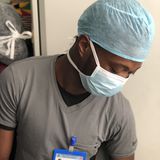
hydrocortisone cream And an antifungal cream, if your baby has a fungal infection.
A cup of cows milk in bathwater for two or three days. The bacteria in the milk neutralizes the bacteria on the rash. Worked evertime i needed it to when my lit were small.
Keep it clean and dry The most important way to prevent and treat a rash is to keep your baby’s diaper dry and clean. Lay your baby down on a towel whenever they aren’t wearing a diaper. Giving them some time without a diaper during the day may help them to keep the area dry.
Rinse your baby's bottom with warm water as part of each diaper change. You can use a sink, tub or water bottle for this purpose. Moist washcloths, cotton balls and baby wipes can aid in cleaning the skin, but be gentle. Don't use wipes with alcohol or fragrance. If you wish to use soap, select a mild, fragrance-free type.
Gently pat the skin dry with a clean towel or let it air dry. Don't scrub your baby's bottom. Scrubbing can further irritate the skin.
Don't overtighten diapers. Tight diapers prevent airflow into the diaper region, which sets up a moist environment favorable to diaper rashes. Tight diapers can also cause chafing at the waist or thighs.
Give your baby's bottom more time without a diaper. When possible, let your baby go without a diaper. Exposing skin to air is a natural and gentle way to let it dry. To avoid messy accidents, try laying your baby on a large towel and engage in some playtime while he or she is bare-bottomed.
Consider using ointment regularly. If your baby gets rashes often, apply a barrier ointment during each diaper change to prevent skin irritation. Petroleum jelly and zinc oxide are the time-proven ingredients in many diaper ointments.


